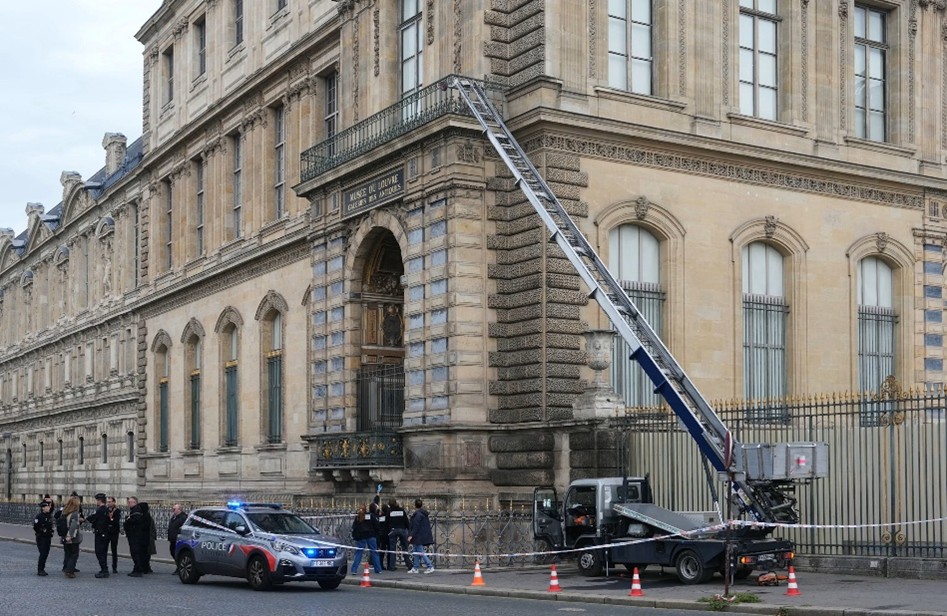
When a $100 Million Heist Exposes the Most Elementary Cybersecurity Risk
Why Smart Password Practices Are Now Essential for Modern Security Systems and Cameras
When thieves stole $100 million in jewels from the world-famous Louvre Museum in Paris, France, they shocked the art world and revealed a serious digital weakness. French media reports say the museum once used its own name, Louvre, as a password for its surveillance system.
In today’s connected world, far too many people still rely on weak, predictable, and recycled passwords. They choose credentials that are easy to remember—birthdays, names of children, spouses, pets, favorite sports teams, or music artists—and they rarely, if ever, change them. This creates a perfect storm for credential-based attacks, and a recent real-world test showed just how vulnerable many individuals truly are.
Earlier this year, an IT professional conducted a controlled password-security experiment with the permission of his customer. He gathered publicly available personal details from employees’ social media profiles—names of family members, favorite teams, hobbies, and other common password ingredients. Then he performed a simple test: he asked an AI model to generate “the 10 most likely passwords for someone named X who likes Y, has Z family members,” and so on.
The results were alarming. Out of 10 employees included in the test, the AI-generated guesses correctly matched working passwords for eight of them.
This wasn’t a sophisticated hack. It didn’t require specialized tools or privileged access. It simply combined publicly shared personal information with AI’s ability to identify patterns in human behavior. And it revealed a critical truth: password habits are often our biggest security weakness.
Physical security is no longer just about the devices you deploy—it’s about how every device is protected, accessed, and managed. As security systems and cameras become smarter, more network-aware, and deeply integrated with enterprise systems, the importance of strong password practices has never been more critical.
What was once a simple “set it and forget it” step has evolved into a foundational layer of cyber-physical defense.
The Hidden Vulnerability in Modern Security Hardware
Security systems and cameras today are powerful, intelligent devices that often sit on the same network as critical business systems. They collect sensitive video footage, interact with cloud platforms, and communicate with other building technologies. But despite all this sophistication, the weakest point is often one of the simplest: the password.
Default credentials, reused passwords, or weak combinations open the door to unauthorized access—sometimes without leaving a trace. In fact, many high-profile breaches in the security industry have been traced back not to hardware failures, but to poor credential hygiene.
Why Password Security Matters More Than Ever
1. Cameras and Security Systems Are Prime Cyber Targets
Cyber attackers know that many organizations overlook password management on physical security equipment. Compromising a camera isn’t just about watching footage—it can expose networks, provide reconnaissance for physical attacks, or serve as a pivot point to reach other systems.
2. Integrated Systems Magnify the Risk
Today’s platforms connect intrusion detection, access control, fire safety, building automation, and surveillance into one ecosystem. A single compromised login could grant access to an entire integrated security environment.
3. Regulatory and Insurance Requirements Are Increasing
More insurers, auditors, and regulatory bodies are scrutinizing credential management. Weak passwords don’t just create risk—they can affect compliance, premiums, and liability exposure.
4. Remote Access Makes Strong Passwords Non-Negotiable
Remote monitoring, mobile alerts, and cloud-based video storage are now standard. This means authentication happens from anywhere, at any time, across various devices. Only hardened password practices can keep that access secure.
What “Smart Passwords” Really Mean
Strong password management is more than adding a few symbols. A modern, smart password strategy includes:
- Unique, strong passwords per device or system
- Multi-factor authentication (MFA) wherever possible
- Password rotation policies
- Elimination of all default login credentials
- Role-based access controls
- Use of password managers or credential vaulting
- Logging and monitoring of login activity
It’s not about making things harder for end users—it’s about aligning security practices with the complexity of today’s threats.
The Business Benefits of Strong Password Hygiene
Smart password practices aren’t just a technical precaution; they drive tangible business outcomes:
- Reduced risk of cyber intrusion and downtime
- Greater customer trust and brand protection
- Smoother audit and compliance processes
- Stronger overall resilience across physical and digital assets
- Improved operational efficiency when access is well structured
A simple investment in password policy and education can mitigate some of the most common and preventable security failures.
The Bottom Line: The Smallest Step With the Biggest Impact
As the world of physical security continues to evolve toward interconnected, intelligent systems, protecting those systems starts with one of the most basic elements: the password.
Organizations that embrace smart password practices not only safeguard their cameras and devices—they protect their people, property, and reputation. In an era where cyber threats increasingly target physical systems, password security isn’t optional. It’s the new frontline of defense.



